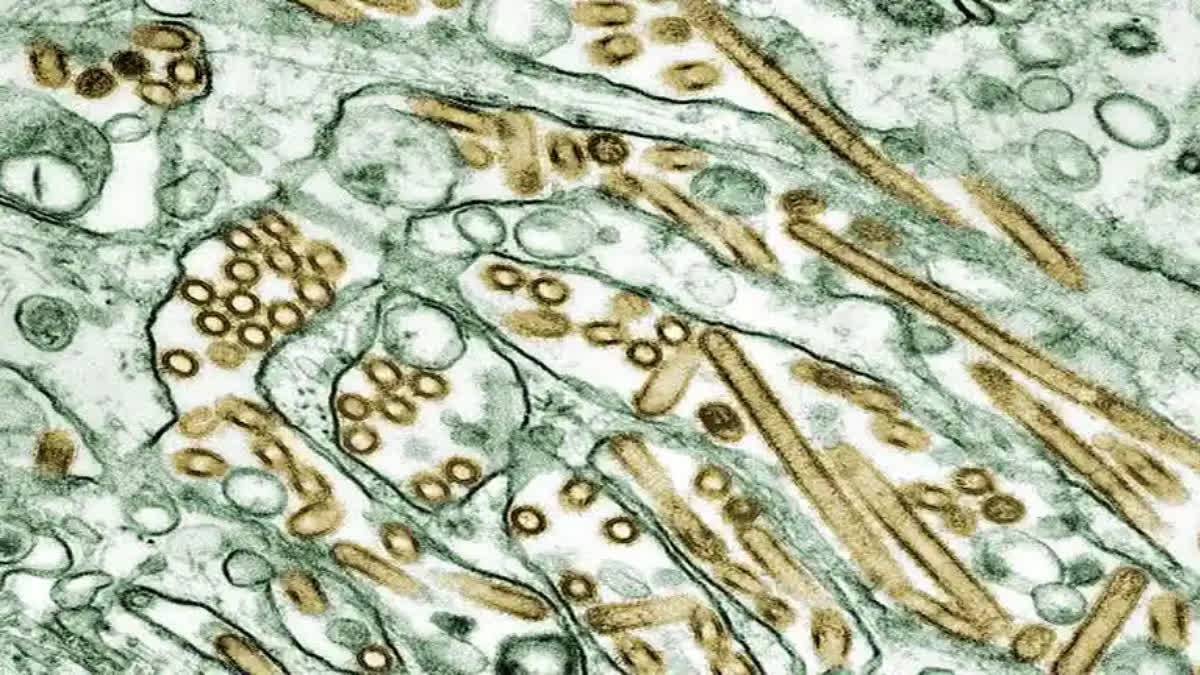New Delhi: Days after the World Health Organisation (WHO) issued guidelines asking the public to avoid contact with high-risk environments such as live animal markets, farms and live poultry as a public health measure against H5N1 influenza viruses, health experts cautioned that the government and health organisations should remain vigilant to manage and respond to any potential outbreaks.
“Despite no current human cases of H5N1 bird flu reported in India, the threat remains significant. Historically, India has seen avian influenza outbreaks and the virus is capable of infecting humans, who have extensive contact with affected poultry, potentially causing a range of symptoms from mild respiratory issues to life-threatening conditions. Typically, India’s bird flu outbreaks occur between the post-monsoon period and early summer, often peaking in the winter month of January,” said Dr Tamorish Kole, past president of the Asian Society for Emergency Medicine told ETV Bharat.
Every country, including India, requires continuous monitoring due to the potential for the virus to mutate and the risk it poses to both animal and human health. The government and health organisations should remain vigilant to manage and respond to any potential outbreaks, Dr Kole said.
The potential impact of the H5N1 bird flu virus is a subject of concern among experts. The World Health Organisation (WHO) has reported a fatality rate of over 50 per cent for the H5N1 virus since 2003, which is significantly higher than the current COVID-19 fatality rate of 0.1 per cent.
“It’s important to note that recently two H5N1 cases were detected in the US and the situation is being closely monitored by health authorities worldwide,” he said. Animal influenza viruses normally circulate in animals, but can also infect humans. Infections in humans have primarily been acquired through direct contact with infected animals or contaminated environments. Depending on the original host, influenza A viruses can be classified as avian influenza, swine influenza, or other types of animal influenza viruses.
Avian influenza virus infections in humans may cause diseases ranging from mild upper respiratory tract infections to more severe diseases and can be fatal. Conjunctivitis, gastrointestinal symptoms, encephalitis and encephalopathy have also been reported. There have also been several detections of A(H5N1) virus in asymptomatic persons, who had exposure to infected birds, in the days before a sample was collected.
From 2003 to March 25, 2024, a total of 888 worldwide human cases of infection of influenza A(H5N1), including 463 deaths, have been reported to WHO from 23 countries. Almost all cases of human infection with avian influenza A(H5N1) have been linked to close contact with infected live or dead birds, or contaminated environments.
According to the latest WHO advisory, the public should avoid contact with high-risk environments such as live animal markets, farms and live poultry, or surfaces that might be contaminated by poultry dropping. Additionally, it is recommended to maintain good hand hygiene with frequent washing or the use of alcohol-based hand sanitiser.
The general public and at-risk individuals should immediately report instances of sick or unexpected animal deaths to veterinary authorities. Consumption of sick or unexpectedly dead poultry should be avoided, the WHO advisory said.
“The US Centers for Disease Control and Prevention (CDC) has analysed the genome of the H5N1 bird flu virus from a human case in Texas and found it mostly resembles viruses in local cattle, with no significant mutations suggesting adaptation to mammals. One genetic change noted (PB2 E627K) is linked to mammalian infection, but hasn't led to human transmission. No antiviral resistance markers were detected, and the virus is similar to strains used in existing vaccine candidates. The analysis indicates a low risk to human health from this virus at present,” said Kole.
To prevent H5N1 flu, limit contact with birds, wear protective gear, avoid exposure to the virus, maintain hand hygiene and cook poultry thoroughly. These steps are vital for those in contact with birds or in outbreak areas, Dr Kole added.
Read more: More Than 450 Hens Die Of Labs Confirmed Bird Flu; Govt On Alert



